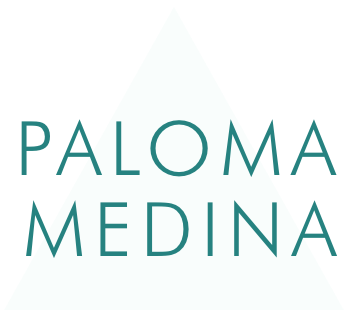Inclusive & Efficient Meeting Structures: #3
Below is a meeting structure I recommend for teams that want to improve their group process - either to leverage everyone’s insights, to increase camaraderie, and/or to make smarter decisions. While this structure might seem to take longer than your current meetings, I promise it saves you hours, if not weeks, of ineffective conflict, mistrust, and confusion that can slow and frustrate even the smartest teams.
What follows is the exact script that the meeting leader or facilitator would say. If there are extra instructions for the lead or facilitator that are not to be spoken, those will be in [bracketed italics].
Opening: 5 minutes
We’ll be trying out a new collaborative meeting structure to help us hear more insights and ensure that we make more well-informed decisions as a group. Let’s test this structure out for two meetings so that we get to truly “kick the tires” and then we can iterate or go back to our regular meeting structure if we don’t find it helpful.
I’ll be our timekeeper and facilitator.
The ground rules are: there is zero interrupting each other, and zero debating back and forth unless we have time afterwards. In a moment you’ll see that we’ll still be able to explore all key points without having to over-argue things to death :)
Context from the Proposal/Decision Lead: 5 minutes
______ will be presenting their proposal for _______ [or it can be a question or issue the group needs to discuss or create clarity on] to get our feedback on. They’ll have five minutes to give us the key points, and while they share, write down any questions or feedback you have, we’ll open it up after to hear from everyone.
[5 minute key-points presentation or sharing is done]
Questions: 2 min of quiet, then 1 minute each to share
Now, everyone take 2 minutes to think about the 1 or 2 top questions you will share with the group. You will only have one minute to share, and if we can answer your question in 30 seconds we will, but otherwise all questions will be noted to be answered later, but this way we hear them all together. Take 2 minutes of quiet now to decide which questions you’ll share.
[2 minutes of quiet]
Now we’ll go in alphabetical round-robin by first name, reminder you each have one minute total
My timer will chime when you’re out of time, please don’t go over, as that means you’re eating into someone else’s time. Trust that either someone else will ask a question you didn’t get to ask, or you can always email the lead afterwards with further questions.
You can also “pass” if your question has already been asked, or “pass until the end” if you want more time before you sahare.
[1 minute each round robin]
Pluses: 2 min of quiet, then 1 -2 minutes each to share
Now, everyone take 2 minutes to think about what you like, what benefits you see, or any other “pluses” that are worth noting about this issue or proposal. You again will only have 2 minutes to share with the group, so prioritize them in case you run out of time.
[2 minutes of quiet]
Now let’s again go in alphabetical round-robin by first name, reminder you each have 2 minutes total [cut to 1 min each if you have more people than you have time for this section]
My timer will chime when you’re out of time.
As before, you can “pass” if your ideas have already been shared, or “pass until the end” if you want more time before you share.
[2 minutes each round robin]
Risks/ Concerns: 2 min of quiet, then 1-2 minutes each to share
Everyone take 2 minutes to think about what risks or concerns you see that you want to share will the full group.
[2 minutes of quiet]
We’ll again go in alphabetical round-robin by first name, 2 minutes each [cut to 1 min each if you have more people than you have time for this section]
My timer will chime when you’re out of time. As before, you can “pass” if your ideas have already been shared, or “pass until the end” if you want more time before you share.
Reminder: no need to argue or debate what someone shares - you’ll get your turn to offer your thoughts, and all will be noted equally for the project lead or decision owner to mull over after this. We’re here to hear all perspectives first.
[2 minutes each round robin]
Next Steps: from the Lead Five minutes
Great, now that we’ve heard all these important perspectives, the project lead/ decision owner will take them and either do more research or re-drafting, or will make a decision or finalize if they think they have all the information they need. Let’s hear from the project lead/decision owner, the following:
What’s the next key milestone (and date) we can expect on this?
What is the outcome or deliverables they’ll be reporting back on?
What human needs and risks they’ll be keeping their eye on and reporting back on?
Closing
Great, if any other questions, ideas or key concerns come up, please reach out to the project lead/decision owner on this directly by ___/___/___.Thanks everyone for helping test out this meeting structure, let me know via (email/slack/survey I’ll send) your thoughts on this. We’ll try it again at the next __ meeting to get the hang of it a little more before making a final decision on which parts to keep, which to change.
What key issue or question can you use this meeting structure for?
Everything from a decision you should move forward on, or a point of confusion or disagreement that needs clarity or a shared perspective on, to a proposal that a team member has for how to improve something.
More FAQs to come later!

